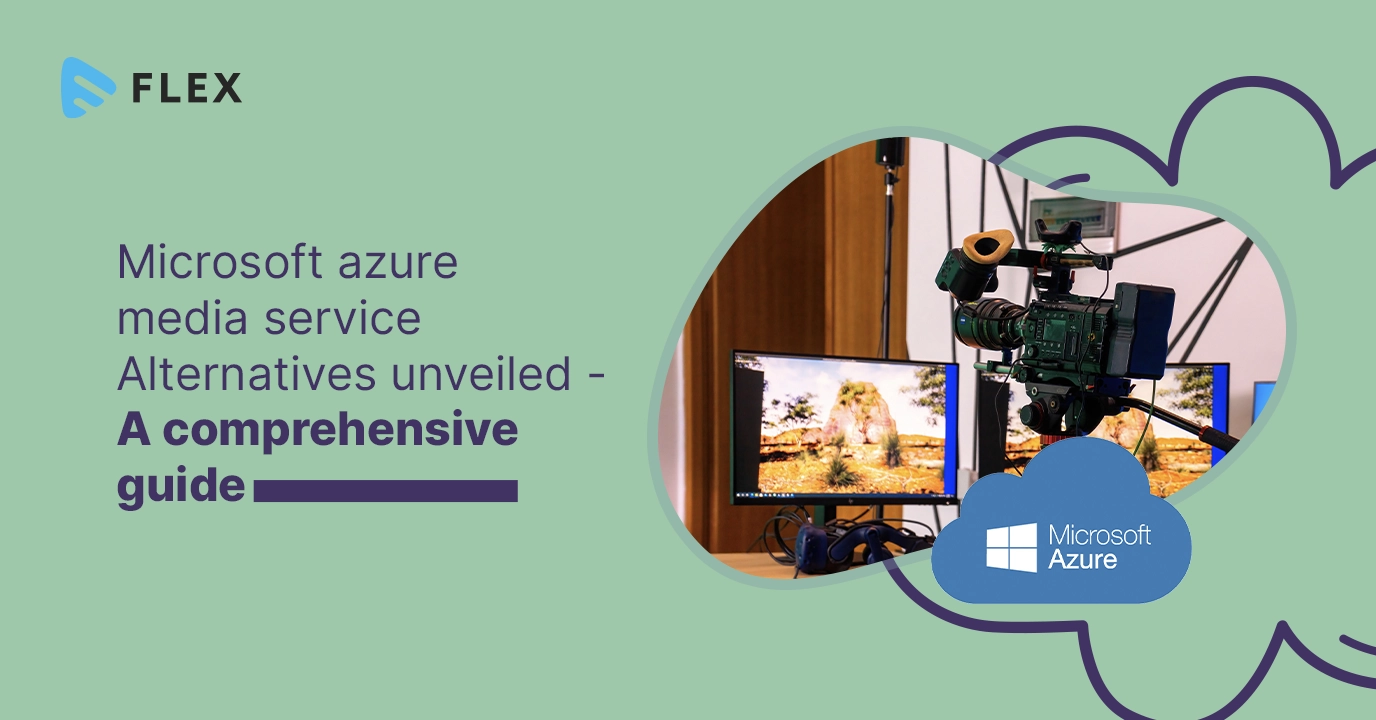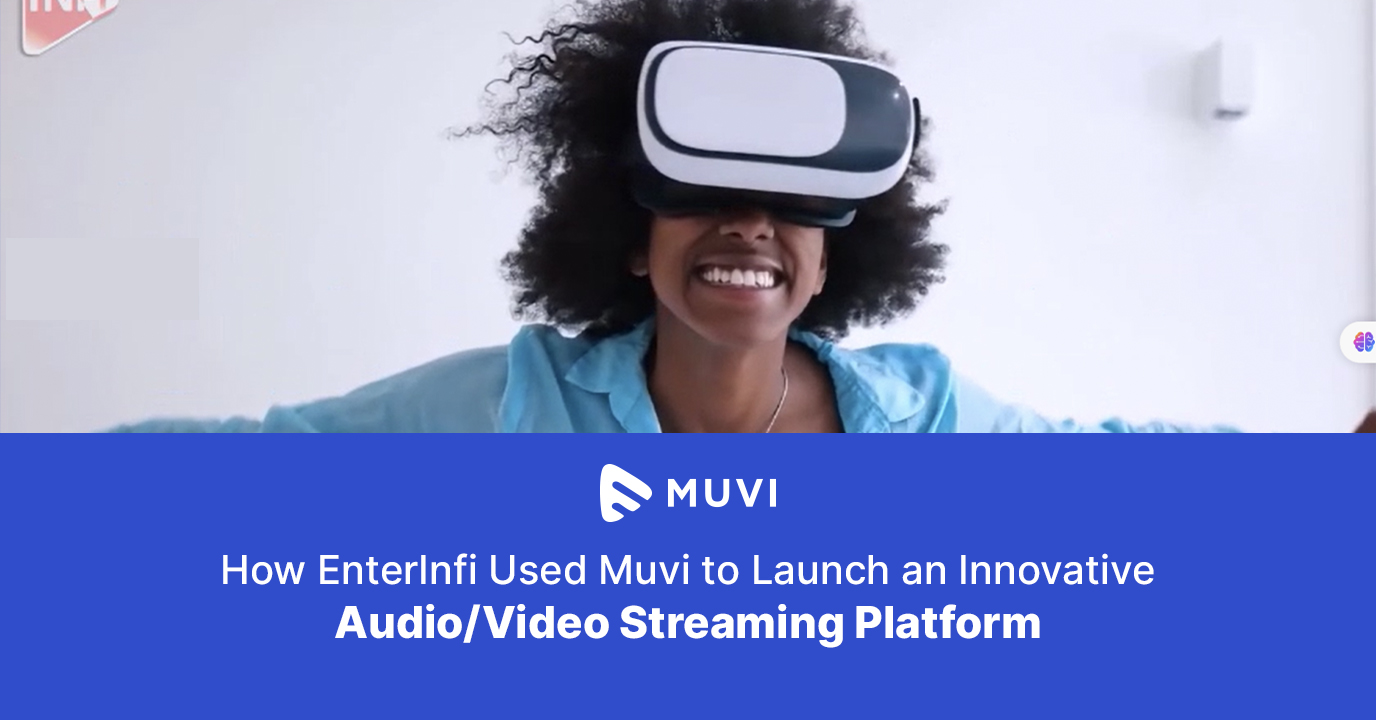Microsoft Azure Media Service has long been a stalwart solution for businesses seeking a robust platform to manage and deliver their multimedia content. However, Microsoft has announced the impending shutdown of Azure Media Service, scheduled to take effect on June 30, 2024.
As the countdown to the service’s sunset begins, organizations relying on Azure Media Service find themselves at a crossroads, necessitating a strategic shift towards Azure Media Service alternative solutions. This comprehensive guide is designed to be a compass in this transitional phase, shedding light on the impending changes, and offering insights into viable alternatives that can seamlessly integrate into existing workflows.
Brief Overview Of Microsoft Azure Media Service
Azure Media Services (AMS) is a cloud-based Platform-as-a-Service that enables broadcast-quality live or on-demand video streaming. Azure Media Services allows users to ingest media content into the cloud. This includes uploading, encoding, and indexing various types of media files. Once content is ingested, Azure Media Services provides tools for managing media assets. This includes organizing, cataloging, and securing media files.
The platform supports both on-demand and live streaming. Azure Media Services integrates with Azure Content Delivery Network (CDN) to ensure low-latency and high-performance content delivery.
Azure Media Services utilizes advanced video encoding and streaming services in high definition to connect with audiences across their preferred devices. Elevate content discoverability and performance through the integration of AI technologies. Simultaneously, ensure the safeguarding of your content with robust digital rights management (DRM) measures.

Why Should You Consider Other Alternatives To Azure Media Services?
End-of-Life Support:
If Azure Media Services is being discontinued, it implies that Microsoft will eventually stop providing updates, patches, and support for the service. In such cases, users may need to migrate to Azure Media Service alternative platforms to ensure ongoing support and maintenance.
Feature Set and Capabilities:
Different media processing and delivery platforms may offer varying features and capabilities. Depending on specific requirements, an alternative service might better align with the needs of a particular project or organization.
Cost Considerations:
Pricing models for media services can vary between providers. Organizations might evaluate alternative solutions to ensure they are getting the best value for their specific use cases and budget constraints.
Integration with Existing Systems:
If an organization heavily relies on other cloud services or has specific requirements for integration with existing systems, they may explore Azure Media Service alternatives that provide better compatibility and interoperability.
Regulatory Compliance:
Depending on the industry and geographic location, there might be specific regulatory requirements related to media content. Exploring alternatives ensures that the chosen solution complies with relevant regulations.
Key Features And Functionalities To Look For In Microsoft Azure Media Service Alternatives
DVR-enabled Livestream:
This feature allows users to record live streams and provides the ability to pause, rewind, or fast-forward during a live broadcast. It’s crucial for delivering a seamless and flexible viewing experience for users who may join the stream at different times.
Online Video Player:
An online video player is the interface through which users interact with the media content. Look for alternatives that offer customizable, feature-rich video players with support for various formats, resolutions, and adaptive streaming for a better user experience.
Encoding and Transcoding:
Encoding and transcoding play crucial roles in video streaming and hosting, helping to deliver high-quality video content to users across various devices and network conditions. Encoding prepares video content for storage and distribution, while transcoding adapts that content on the fly to accommodate different devices and network conditions during streaming. Both processes are integral to providing a seamless and high-quality video streaming experience.
SSO (Single Sign-On):
Single Sign-On allows users to log in once and access multiple services without the need to re-enter credentials. This enhances user convenience and security by reducing the number of passwords users need to remember.
Security Certifications:
Ensure that the alternative platform complies with industry-standard security certifications, such as ISO 27001, SOC 2, or others. These security certifications indicate that the platform follows best practices for information security and data protection.
Built-in Multi-DRM Security:
Digital Rights Management (DRM) is crucial for protecting intellectual property by controlling access to digital content. A good alternative should support multiple DRM technologies to ensure content security across different devices and platforms.
Geo-blocking:
Geo-blocking allows you to restrict access to your content based on the viewer’s geographical location. This can be important for complying with content licensing agreements or meeting regional content distribution requirements.
Device Management:
Effective device management features enable administrators to monitor and control the devices accessing the media content. This includes functionalities like device whitelisting, blacklisting, or remotely managing device permissions.
Built-in CDN (Content Delivery Network):
A built-in CDN improves content delivery speed by distributing media assets across multiple servers globally. This reduces latency and enhances the overall streaming performance, especially for users in different geographical locations.
Content Partner Portal:
A content partner portal is a platform for managing relationships with content partners. It can include features like content sharing, revenue tracking, and collaboration tools to streamline partnerships and content distribution.
Android & iOS app:
Mobile applications for Android and iOS platforms ensure a wider reach for your content. The availability of dedicated apps enhances the user experience on mobile devices, providing additional features and convenience.
Top 5 Microsoft azure media service Alternatives
Muvi Flex
Muvi Flex is amongst the top Azure Media Service alternatives and has helped various businesses around the world to host, store, manage and stream contents across their website and application. Muvi is one of the leading SaaS service providers for media distribution across the globe.
With Muvi Flex, it is easier for businesses of any size to host, store, manage, and publish video and audio files and deliver top-notch video and audio content seamlessly across devices. It helps deliver a seamless viewing experience to audiences across various devices and geographic areas.
Our enterprise-grade security helps you secure your content from any type of digital infringement with its built-in DRM and authentication features. Our platform that is tested to defend itself against a host of security threats and is equipped with essential security features that help us protect you, your platform, your content, and your users from various security threats ranging from hackers to pirates
Key features
- Video and audio hosting
- Encoding and transcoding
- Multiple monetization models
- Analytics
- DRM security
- Built-in CDN (Content Delivery Network)
- Online Video Player
- Security Certifications
Pros
- Encoding and transcoding
- Analytics
- Highest possible security
- On-demand and Live Streaming
- Secure Video and audio hosting
- Multiple monetization models
Pricing
Muvi Flex offers a very competitive pricing plan that is affordable for businesses of any size. Click to know more!
Vimeo
Vimeo is also another Azure Media Service alternative that is known for its emphasis on high-definition video content. The platform allows users to upload videos in a variety of resolutions, including 4K Ultra HD, and it supports a wide range of video formats. Vimeo has built a reputation as a platform that attracts a more artistic and creative community. Many independent filmmakers, animators, and artists choose Vimeo to showcase their work due to its supportive and like-minded user base.
key Features
- Privacy and Customization
- Monetization Options
- Advanced Analytics
- Vimeo On Demand
Pros
- High-Quality Video Playback
- Privacy and Security Features
- Collaboration Tools
- Live Streaming Capability
Cons
- Smaller User Base
- Limited Social Sharing Integration
- Limited Free Storage
Pricing
- Starter – $12 per seat / month billed annually
- Standard – $20 per seat / month billed annually
- Advanced – $65 per seat / month billed annually
Brightcove
Brightcove is a leading global provider of cloud services for video. The company offers a comprehensive suite of products and services that enable organizations to deliver, monetize, and manage their video content effectively across various devices. it provides a robust platform for hosting and managing video content. This includes features such as content organization, metadata management, and video analytics, allowing users to gain insights into viewer behavior and engagement.
Key features
- Video Hosting and Management
- Multi-Platform Video Delivery
- Monetization Solutions
- Live Streaming
Pros
- Video Analytics
- Security and Privacy
- Integration Capabilities
Cons
- Complexity
- Customization Limitations
- Limited Storage in Lower Tiers
Wistia
Wistia is a video hosting and analytics platform that caters to businesses, providing them with tools to host, manage, and analyze their video content. Wistia has grown to become a popular choice for companies looking to leverage the power of video in their marketing and communication strategies. It allows users to upload and host their videos on its platform. This is particularly useful for businesses that want a professional and reliable hosting solution for their marketing, training, and informational videos.
Key features
- Video Hosting
- Customization
- Video Analytics
- Lead Generation
- Security
Pros
- Responsive Player
- Customer Support and Education
- Analytics
Cons
- Limited Free Plan
- Storage Limitations
- Dependency on Third-Party Integrations
Pricing
- Plus – $19/MONTH BILLED ANNUALLY
- Pro – $79/MONTH BILLED ANNUALLY
- Advanced – $319/MONTH BILLED ANNUALLY
- Premium – Speak with sales
Uscreen
Uscreen is a video monetization and distribution platform that enables individuals and businesses to create, market, and sell their videos online. It provides a comprehensive solution for content creators looking to launch their own video streaming service. Keep in mind that there might have been changes or updates to Uscreen since then.
Key features
- Video Monetization
- Customization and Branding
- Content Management
- Analytics and Reporting
- Customer Support
Pros
- Customization
- Monetization Options
- Content Security
- Built-in Marketing Tools
- Multi-Device Support
Cons
- Content Security
- Built-in Marketing Tools
- Video Hosting
- Customer Support
Pricing
- Growth – $149/month + $1.99 per paid member/month
- Pro – $499/month + $0.99 per paid member/month
- Plus – Custom pricing – speak with sales
Conclusion
The impending shutdown of Microsoft Azure Media Services in 2024 has prompted a search for viable Azure Media Service alternatives to ensure seamless media workflows for businesses and content creators. To continuously evolve, it is essential for organizations to adapt and choose solutions that not only meet their current needs but also provide scalability for future growth.
Muvi Flex stands out as the most secured video hosting platform, guaranteeing effective hosting, storage, and management of video content. Seamlessly deliver high-quality video and audio across various devices, captivating your audience with an unparalleled viewing experience, irrespective of their network bandwidth.
Choosing Muvi as your alternative comes with a myriad of advantages that make it a compelling option for businesses and content creators seeking a reliable and feature-rich platform.
On the other hand, Muvi One provides an end-to-end solution that covers every aspect of streaming media, from content creation and management to monetization and delivery. This all-in-one platform eliminates the need for piecing together multiple services and simplifies the streaming process.
We provide various monetization models, including subscription-based, pay-per-view, and advertising. This flexibility allows content creators to choose the revenue model that best aligns with their business goals and target audience.


















Add your comment